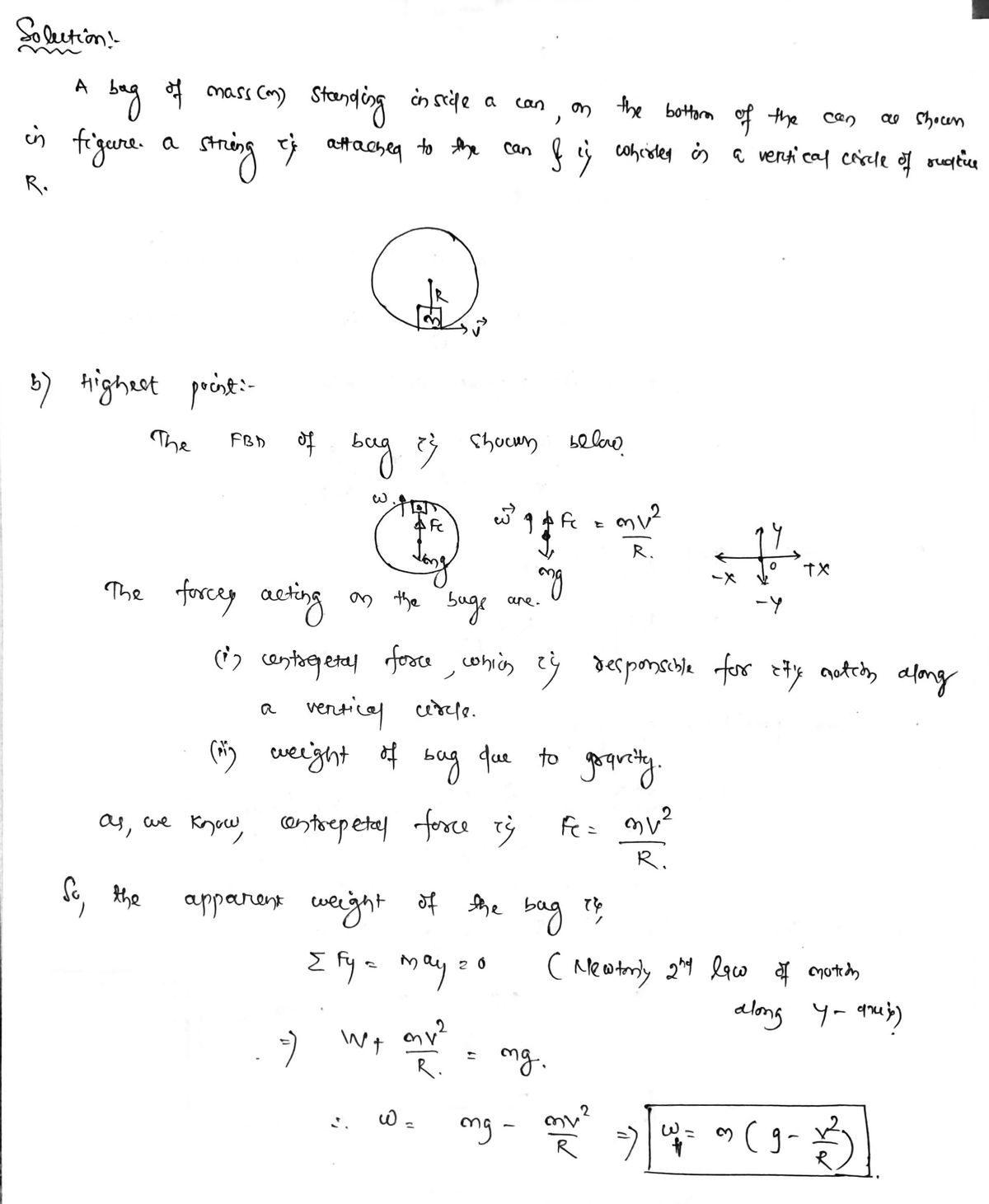b) Highest point: i) Draw FBD for the bug. ii) Determine the apparent weight of the bug. c) Lowest point: i) Draw FBD for the bug. ii) Determine the apparent weight of the bug. d) Do these results agree with your prediction?
b) Highest point: i) Draw FBD for the bug. ii) Determine the apparent weight of the bug. c) Lowest point: i) Draw FBD for the bug. ii) Determine the apparent weight of the bug. d) Do these results agree with your prediction?
Related questions
Question
This is a PRACTICE problem NOT homework
Please do parts B C & D

Transcribed Image Text:**Vertical Circular Motion, "Up-Side-Down," Apparent Weight**
A bug of mass \( m \) is standing inside a can, on the bottom of the can. A string is attached to the can, and the can and string are whirled in a vertical circle of radius \( R \) at a constant speed \( v \), as shown in the diagram (at the bottom position only). Provide all answers in terms of \( m \), \( v \), \( R \), and/or \( g \).
**a) Prediction:** Where do you think the bug feels heaviest? Lightest?
**b) Highest Point:**
- i) Draw Free Body Diagram (FBD) for the bug.
- ii) Determine the apparent weight of the bug.
**c) Lowest Point:**
- i) Draw Free Body Diagram (FBD) for the bug.
- ii) Determine the apparent weight of the bug.
**d)** Do these results agree with your prediction?
**e)** At what tangential speed should the bug move so the apparent weight at the top is zero?
**f)** What is the radial acceleration of the bug at this speed?
**g)** What is the apparent weight of the bug at the bottom at this speed?
**Diagram Explanation:**
The figure on the top right shows a can being whirled in a vertical circle with the bug inside it. The radius of the circle is \( R \), and the speed at the bottom is \( v \).
The lower diagram represents the Free Body Diagram (FBD) for the bug at the lowest point. The forces shown are:
- \( T \) (Tension) pointing upward.
- \( F_N \) (Normal Force) also pointing upward.
Annotations indicate predictions about where the bug would feel heaviest and lightest.
Expert Solution
Step 1

Step by step
Solved in 2 steps with 2 images

Follow-up Questions
Read through expert solutions to related follow-up questions below.